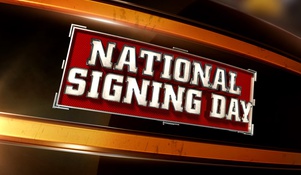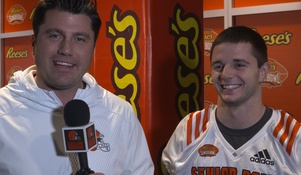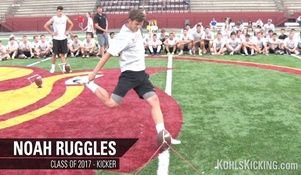Tar Heel Draft Prospects Breakdown
When the draft begins on April 27th in Philadelphia, 19 former Tar Heels will be available to be drafted. While a little over half of the prospects will probably go undrafted, this year could be a Tar Heel ladened draft, with as many as eight Tar Heels being drafted in certain mock draft. Let's breakdown the Tar Heel draft prospects for this year.
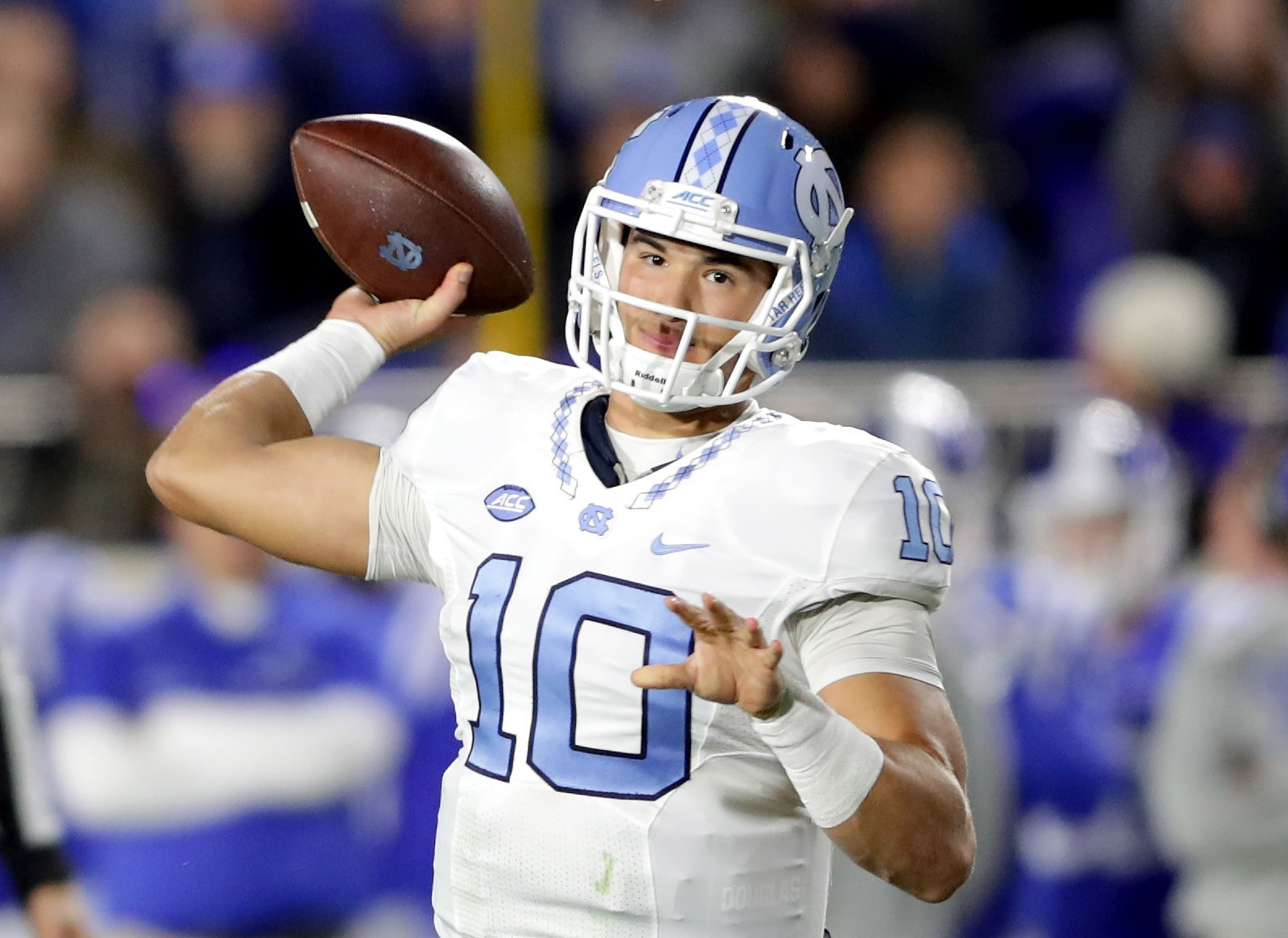
Mitch Trubisky-QB
Late 1st-2nd Round
Trubisky is the Heels top prospect and for good reason. Trubisky possesses an NFL quarterback skill set, as he has one of the strongest arms in the draft. Trubisky's touch is one of the best in this draft. His mobility is downplayed by the fact that he only uses his legs when he needs to. Trubisky takes care of the football about as well as any quarterback in the draft, as witnessed in his 30-6 TD-INT ratio. The only considerable downside on Trubisky is the lack of experience. Trubisky only has one year of starting experience, and that is a bit scary if you're an NFL scout. Trubisky has only taken snaps under center a few times, but so have most of the other quarterbacks in the draft. Trubisky could use some time to sit and learn behind a veteran quarterback and refine his skills to an NFL level.
Pro Comparison: Carson Wentz
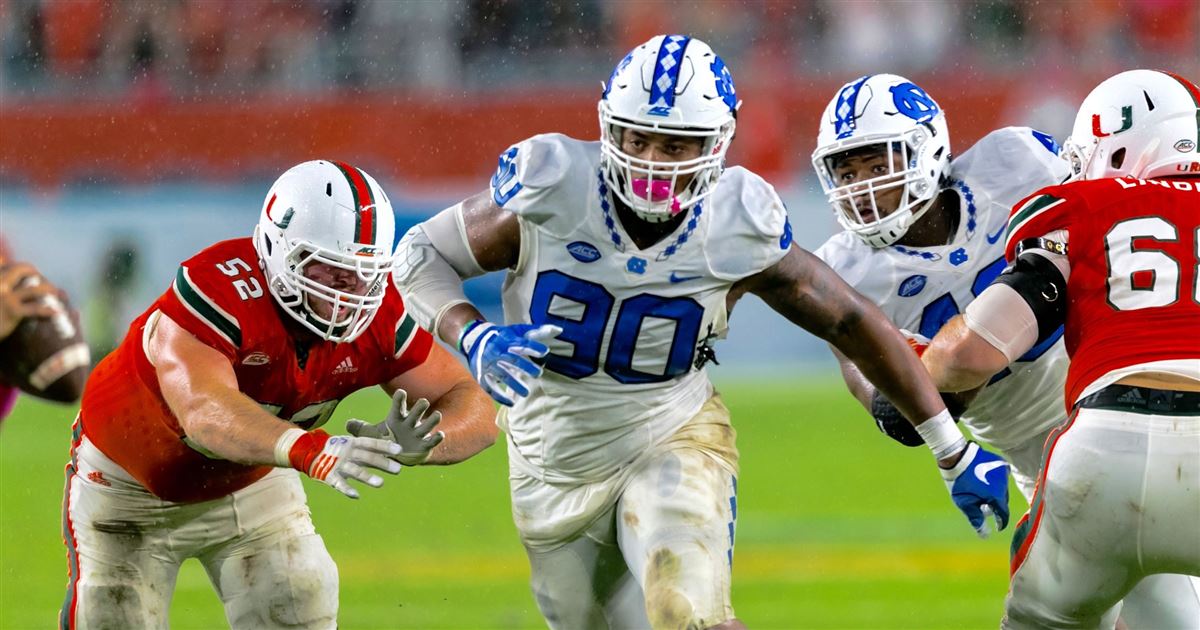
Nazair Jones-DT
2nd-3rd Round
Jones decided to come out early and in recent mocks it's starting to seem like a good move for him. Jones is loved by NFL scouts for his size and his use of hands. Jones quick hands allow him to work past interior lineman and get into the backfield. He will fit that run stopping role nicely for someone. There is little downside to Jones. He isn't a pass rusher but as a DT that's not really expected. At times this season, Jones was overpowered, which is a bit troublesome, but part of that was due to double teams being placed on him.
Pro Comparison: Geno Atkins

Ryan Switzer-WR
3rd-4th Round
Switzer most likely considered a slot receiver in most scouts mind due to his height and weight. He is much more than a slot receiver, though. Switzer is possibly the most flexible option at receiver in this draft, meaning you can play him just about anywhere in the receiving corps. Switzer has natural, reliable hands, as he caught his first 56 receptions of the year without a single drop. Switzer possess blazing speed, but his best asset is his shiftiness. Switzer can get away from just about any would-be tackler, which is what makes him such a dangerous punt returner. Switzer is a strong route runner, as well, considering he came from a rather complex offense at Carolina. Switzer's size may keep him from playing a lot on the outside, but other than that there is few things scouts can really critique about Switzer.
Pro Comparison: Doug Baldwin
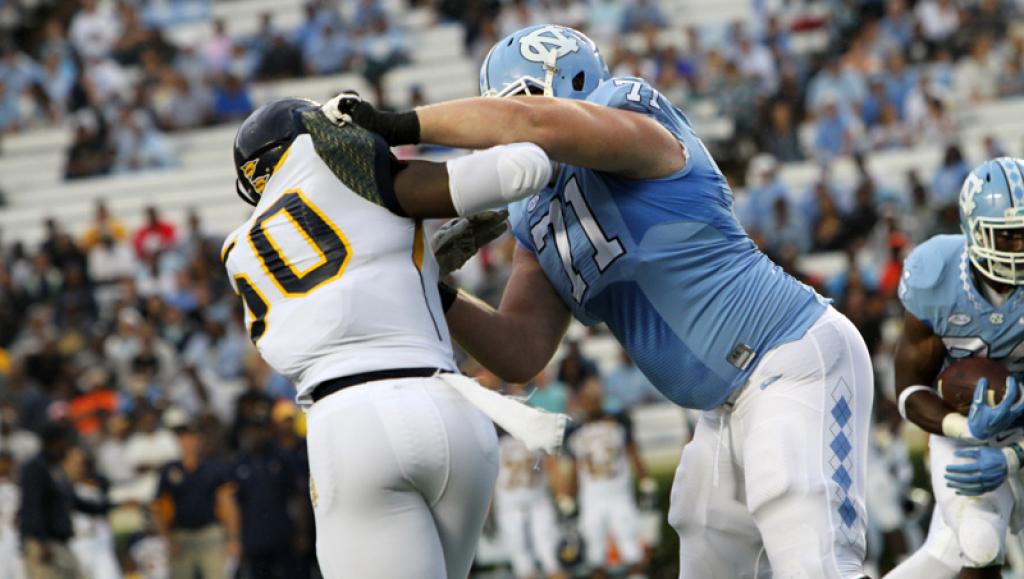
Jon Heck-OT
4th-5th Round
Heck is a strong pass protector as witnessed in the first half of the season when he faced guys like DeMarcus Walker and Ejuan Price. Heck held up decent in run protection, but at times looked overmatched. After an injury suffered mid-season, Heck was slowed and struggled badly at times, something scouts could hone in on. Heck most valuable asset, though, may be his experience. Heck is one of the more experienced offensive lineman in the draft, as he has been a starter for four years. The other downside to Heck is he can be beat around the outside by speed rusher, particularly 3-4 OLB, because he isn't as quick as some of the other tackles in this draft.
Pro Comparison: Matt Kahlil
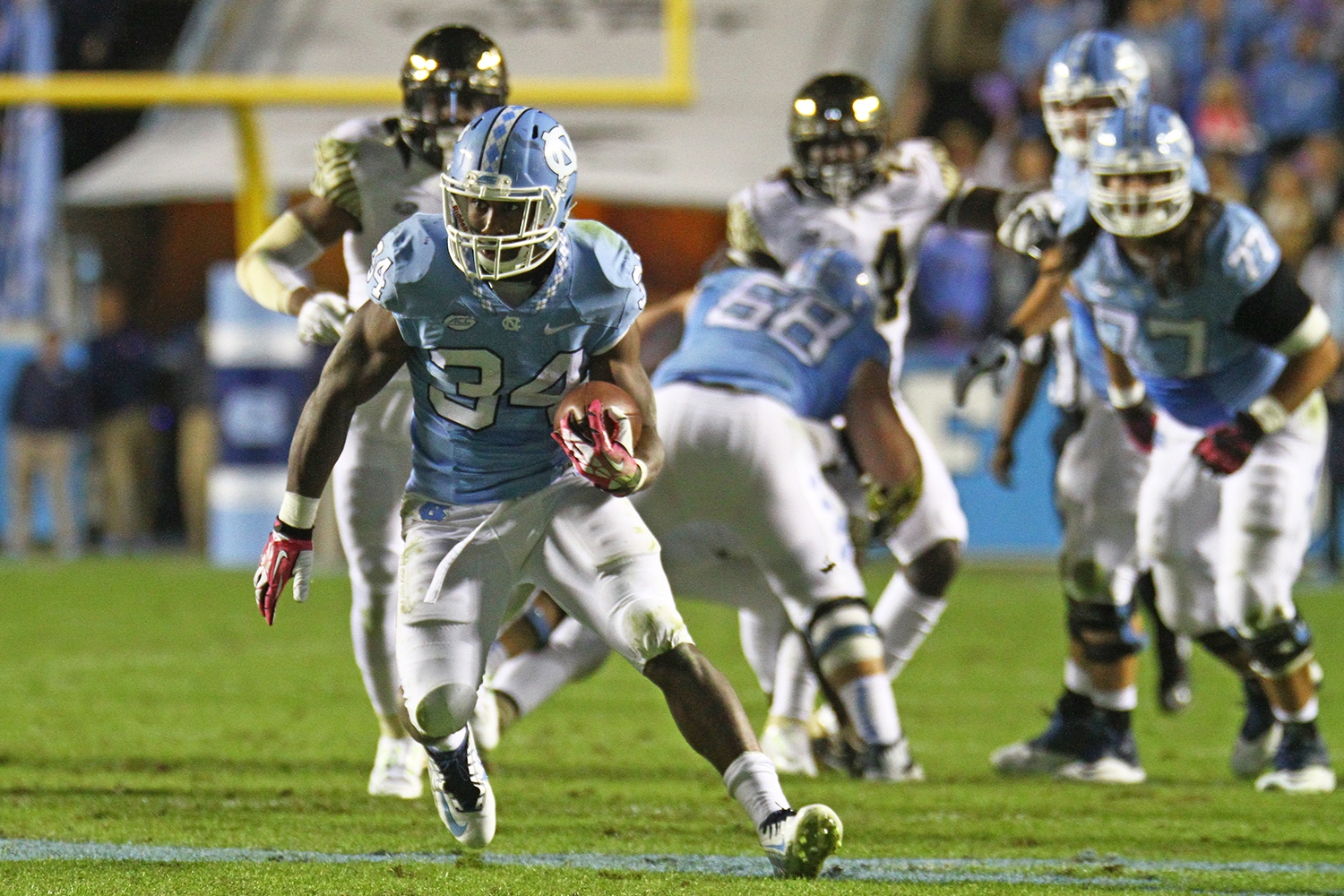
Elijah Hood-RB
4th-5th Round
Hood is a physical back when he wants to be and that how he will make his living in the NFL. Hood is a one cut back who gets up field quickly and won't go down easy. Combine this with his speed, and when Hood is 100%, he's one of the more balanced backs in this draft. Hood proved at times this season that he can come out of the backfield and be a threat in the receiving game. This year showed some concerning downsides for Hood. The one main concern with Hood is effort level. At times this year it seemed that Hood just wasn't running with the edge that we know he can. Hood has to prove that he can run with an edge every down at the next level. The other main concern is that Hood only had one strong year on the ground in his three seasons in Chapel Hill.
Pro Comparison: Jonathan Stewart
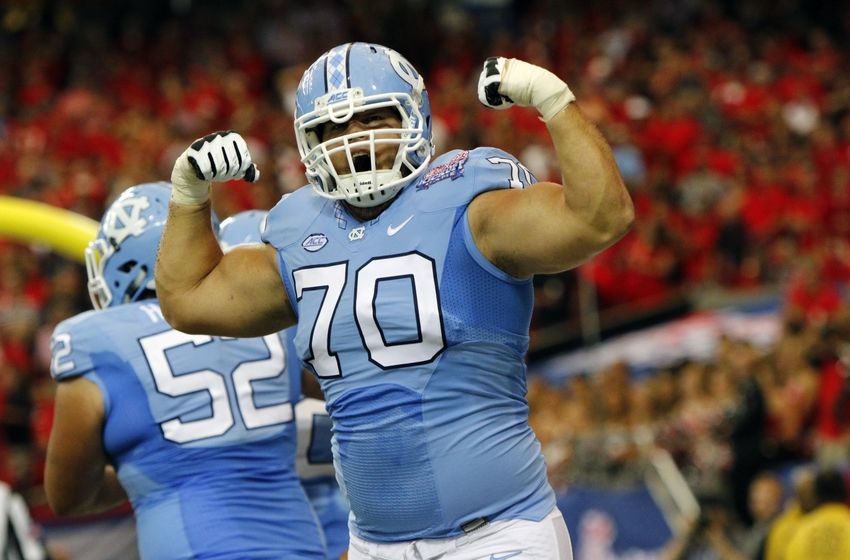
Caleb Peterson-OG
4th-5th Round
Peterson is a mauler on the inside that was the anchor of the Heels offensive line this year. Peterson was the best run blocker for the Heels as he can move defensive tackles to create running lands. Peterson was a great pass protector as well, allowing his quarterback time to throw the football. Peterson was also an emotional leader, which scouts will value. The concerns around Peterson will begin with his injury history. Peterson has had issues staying on the field his entire career, including this past season which ended with a back injury. The other concern could be size for Peterson who weighs exactly 300 lbs. Peterson would ideally add about 15 to 20 pounds to fit what most NFL teams want in a guard.
Pro Comparison: Ali Marpet
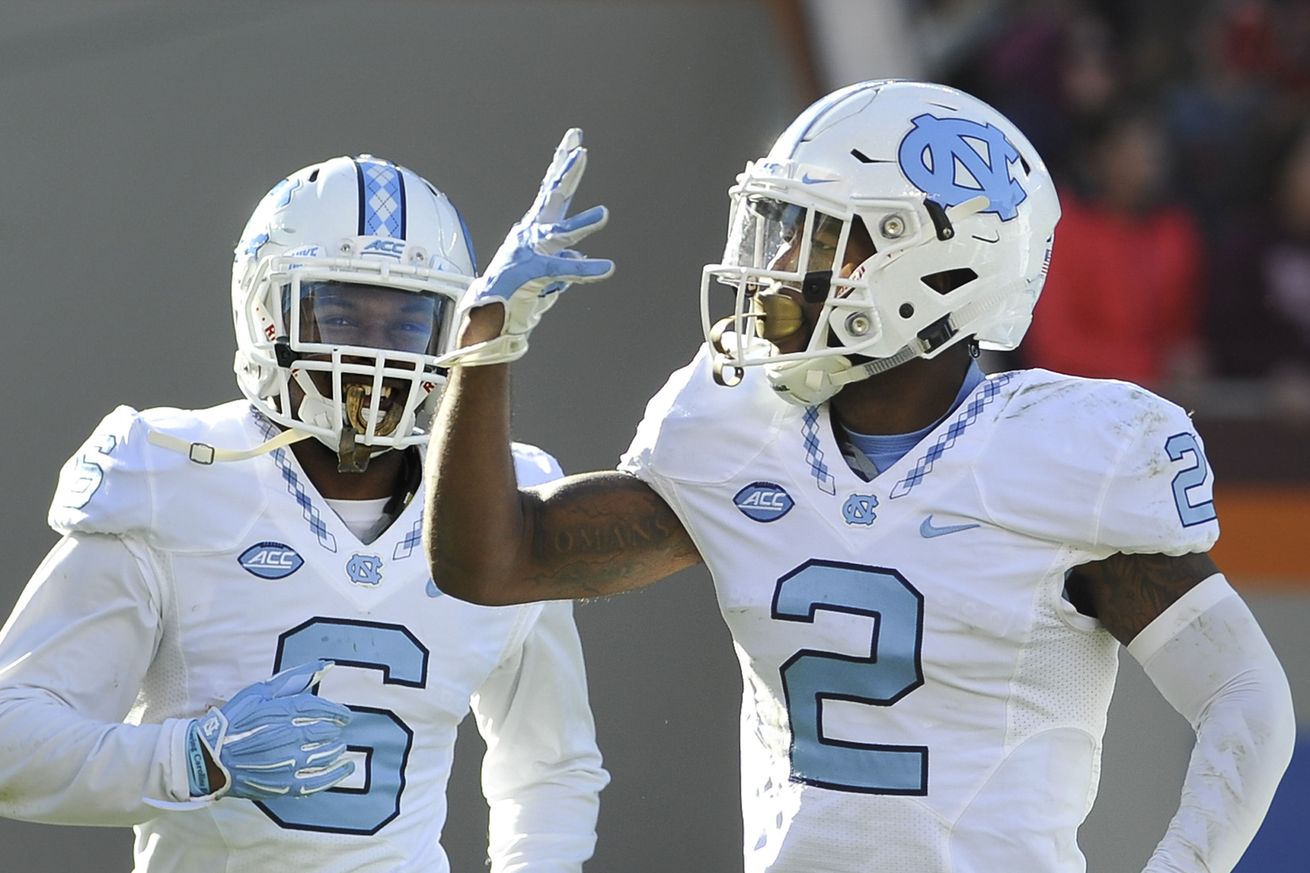
Des Lawrence-CB
5th Round
Lawrence was a shutdown corner in his time in Chapel Hill. Why? Lawrence has that great ability to get a jump on the ball, allowing him to contest almost any pass thrown his way. Lawrence is solid in both types of coverage, but is not as polished as some of the top corners in this draft. Lawrence is a durable player who did not miss a start in his time at Carolina. The marks against Lawrence will focus on the fact that he is not a player that will create many turnovers. This season, Lawrence failed to register a single interception, something that teams will not be encouraged by. Lawrence also has his struggles getting off blocks at times, something he will need to get better at at the next level. Another concern is how will Lawrence handle being the corner that gets thrown at?
Pro Comparison: Mackenzie Alexander

Mack Hollins
7th Round
Hollins is one of the more interesting prospects at the receiver position in this draft. Hollins has the ability to take the top off of just about any defense, something every team desires. Hollins has natural hands, as he rarely drops anything thrown his way. Hollins size allows him to pull away from defenders with long strides and go get the football on jump balls. Hollins is also a valuable special teams asset. He made countless plays on special teams in his time in Chapel Hill. The main downside on Hollins is that he was never really anything more than a deep threat at Carolina. At the next level Hollins will have to prove that he can be more than just that. He will also have to prove he can run more complicated routes.
Pro Comparison: Kenny Stills
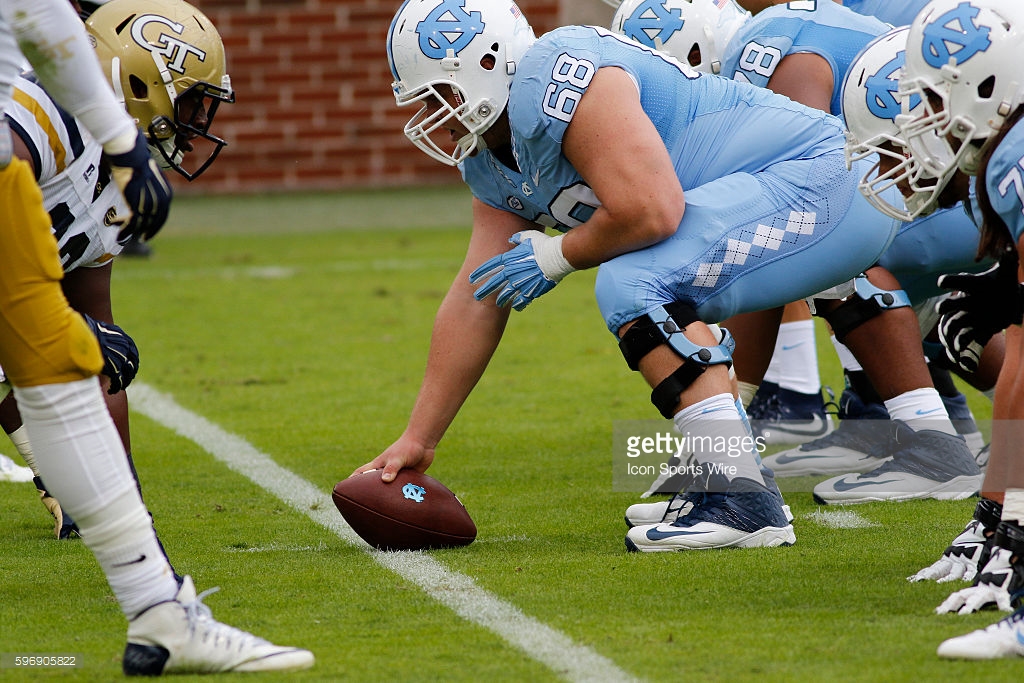
Lucas Crowley-C
7th-Undrafted
Crowley is one of the more experienced centers in this draft and that could definitely be helpful to his stock. When Crowley was on, he was one of the best centers in the country. At times, he was able too provide strong pass protection and create running lanes for the running game. The issues for Crowley, though, start with consistency. Crowley was extremely up and down this year and that is something NFL scouts will struggle with. Which Crowley will we see the most, good or bad? Crowley had issues, particularly early in the season, with a lot of low snaps. Crowley will have to be more consistent here as well. Crowley was dominated by superior defensive tackles, including by both of his last two opponents. NFL scouts could be hesitant to take a risk on Crowley because of these reasons.
Pro Comparison: Weston Richburg
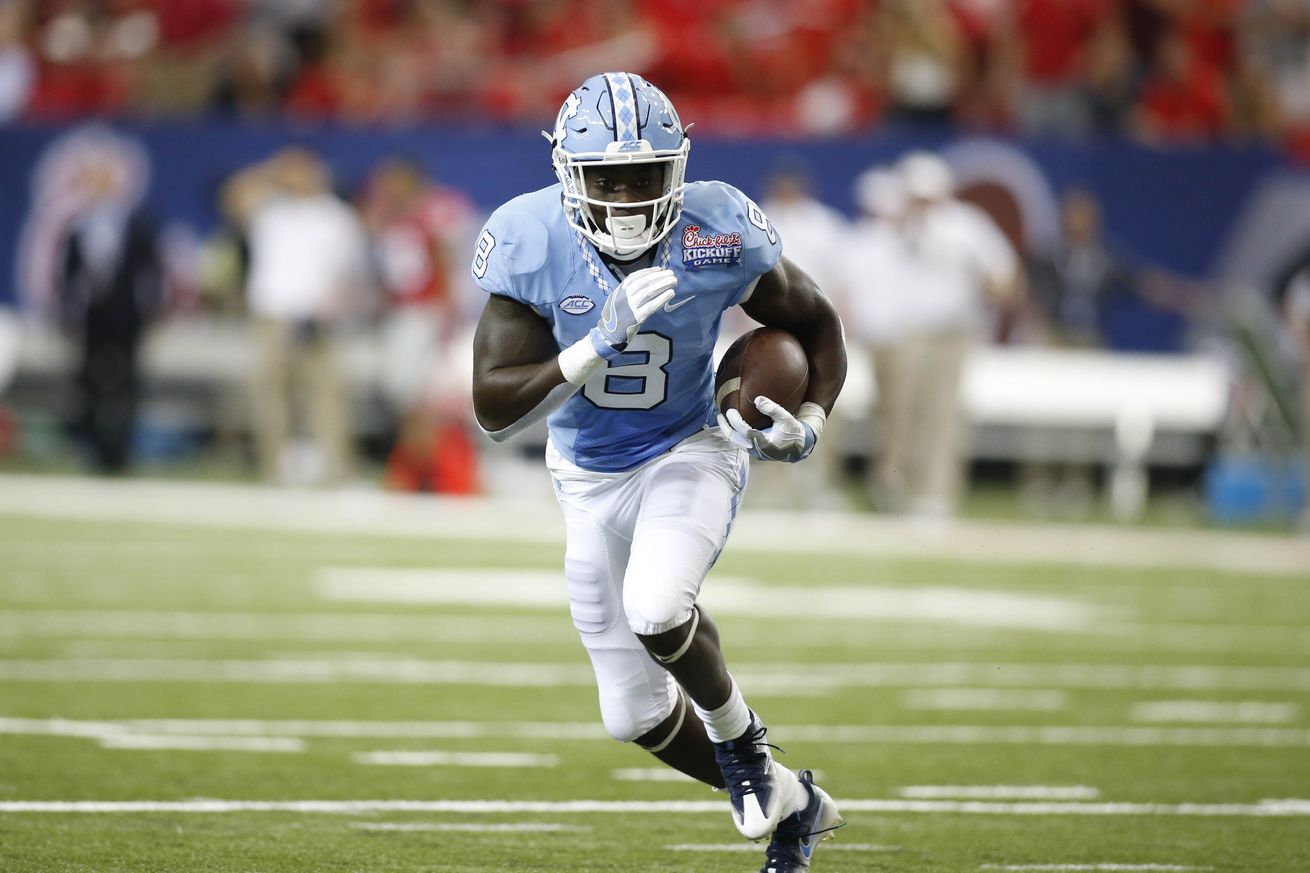
T.J. Logan-RB
Undrafted
Logan could bring a change of pace guy that NFL teams would really like. Logan has good speed to go along with enough of an edge to run through defenders. Logan is also a threat as a receiver out of the backfield, which is how he was able to rack up so many all purpose yards. Logan is an effective kick return who took two kicks back for a touchdown this year. The issues for Logan begin with the fact that he has never really carried the load out of the backfield. Logan has been that No. 2 option most of his career, meaning he doesn't have the experience of most of the backs in this draft. The other issue for Logan is honestly just how stacked this running back draft class is. This might be the deepest running back class in the history of the draft, meaning Logan may get lost in the mix.
Pro Comparison: Brandon Bolden

Bug Howard-WR
Undrafted
Howard’s size is the asset most NFL scouts will fall in love with. At 6’5, Howard can go up and get 50-50 balls, something other receivers in this draft fail to be able to do. Howard is a solid route runner, being a part of Carolina's more complex offense. Howard has some obvious concerns, however. Howard has had drop problems throughout his career, which is hard not to notice. Howard also struggles with consistency, something he has to develop at the next level to stay on a roster.
Pro Comparison: Dorial Green-Beckham
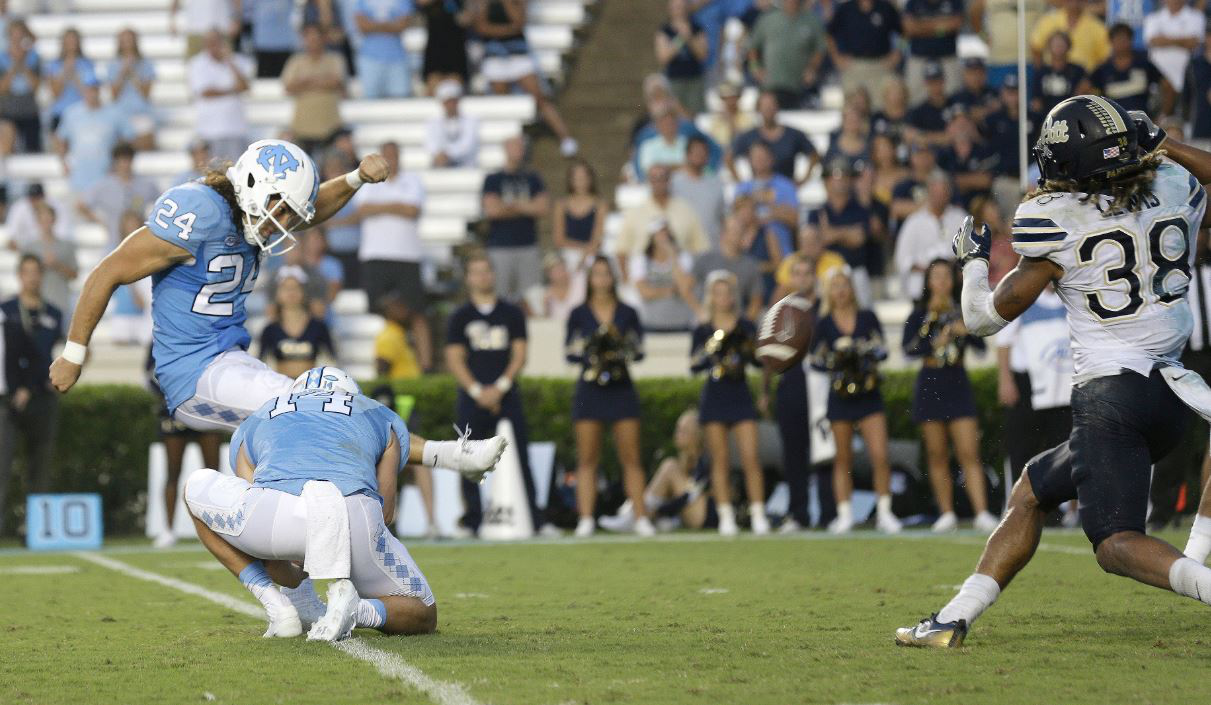
Nick Weiler-K
Undrafted
Weiler has a strong leg. Want proof? Watch the video above. Weiler has been extremely accurate these last two seasons, connecting on 80% of his field goal attempts. Weiler is also a great kickoff man, with about 85% of his kicks going for touchbacks. Weiler’s early inaccuracy may be held against him, but it shouldn't.
Pro Comparison: Chandler Catanzaro
